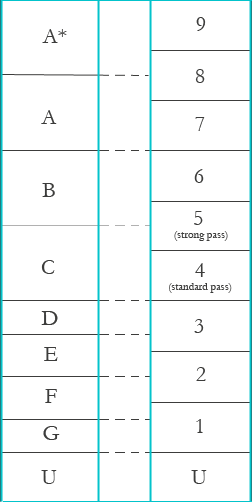 One major change is that the old grade C has been split out to become grade 4, known as a ‘standard pass’ and grade 5 known as a ‘strong pass’
One major change is that the old grade C has been split out to become grade 4, known as a ‘standard pass’ and grade 5 known as a ‘strong pass’As a result of a change to the exam process, the previous regime of alphabetical grades (A*-G) has been replaced with a numerical system (9-1).
The changes have been introduced in the wake of exam boards being encouraged to make exam content more challenging for pupils. However, despite the dramatic changes introduced, exam boards will continue to use statistical measures when grading, meaning that broadly the same proportion of students that received a grade C previously will receive a grade 4 or higher under the new system.
Despite the Department for Education stating that any direct comparison between the old and new systems not being completely accurate, certain comparisons can be drawn as shown in the below table.

Grades 9, 8 and 7 now represent the highest grades that can be awarded and correspond with the previous top grades of A* and A. It has been stated that the introduction of an additional grade at the top end of the scale will provide more differentiation between high achievers and that fewer grade 9s will be awarded than A*s under the old regime to put an emphasis on exceptional pupils.
The point where the two systems are most comparable is that the minimum threshold to achieve grade 4 is equivalent to the minimum threshold to achieve a grade C previously.
However, one major change is that the old grade C has been split out to become grade 4, known as a ‘standard pass’ and grade 5 known as a ‘strong pass’.
At the bottom end of the scale, the new grading system contains less detail than before with the former grades of D, E, F and G being represented by grades 3, 2 and 1. Grade U remains for any exam paper returned unmarked.
Recruiters love this COMPLETE set of Accredited Recruitment & HR Training – View Training Brochure








